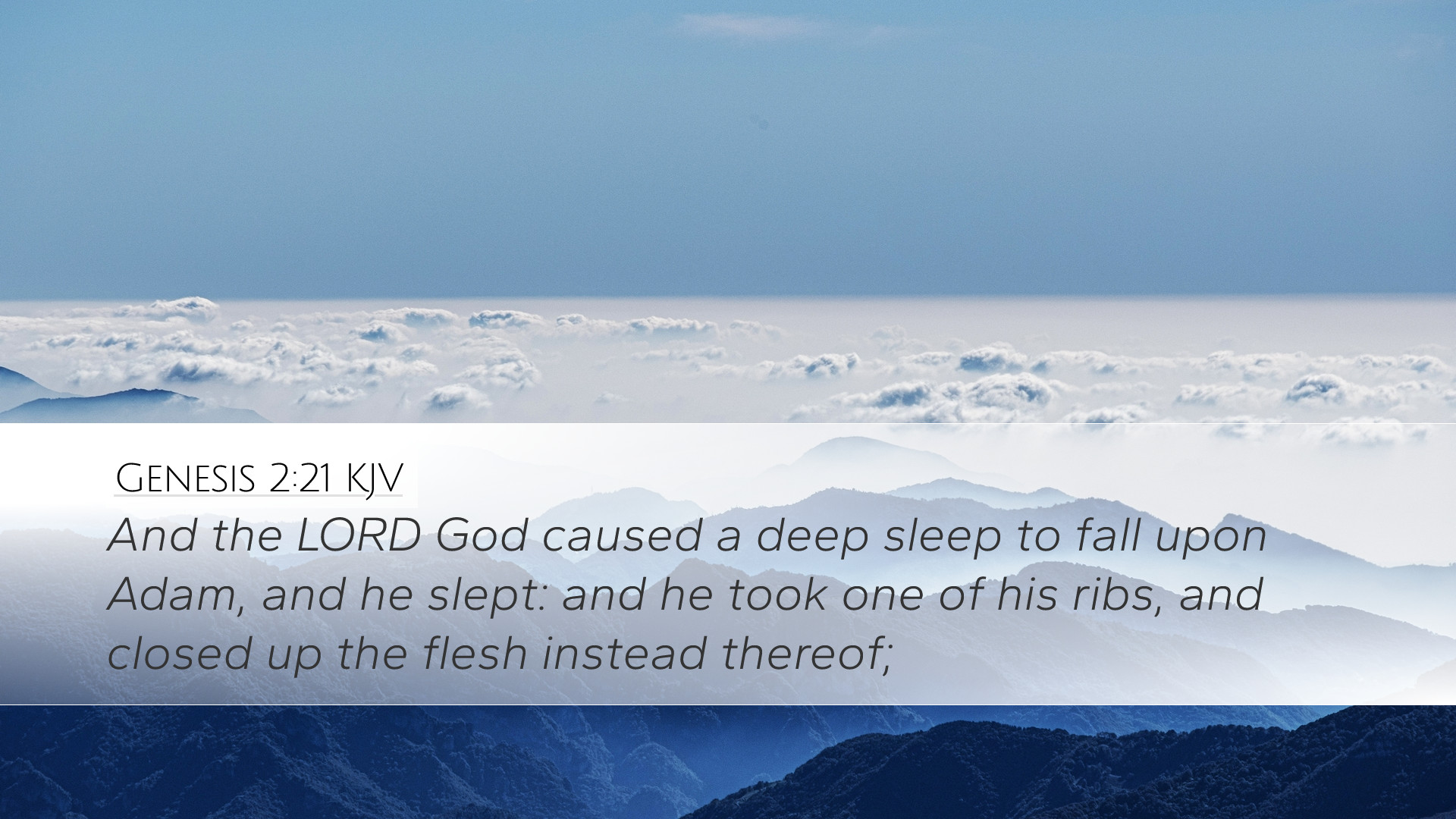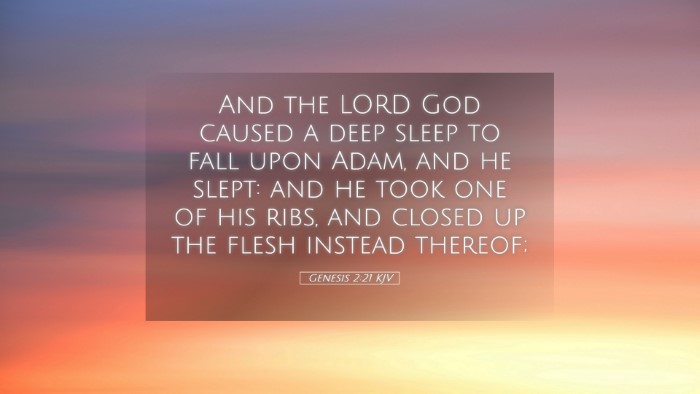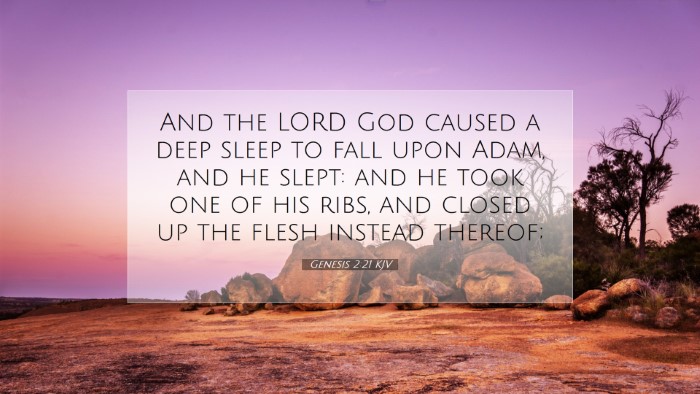Commentary on Genesis 2:21
Genesis 2:21 (KJV): "And the Lord God caused a deep sleep to fall upon Adam, and he slept: and he took one of his ribs, and closed up the flesh instead thereof;"
Introduction
This passage is a pivotal moment in the creation narrative, encapsulating profound theological insights about humanity, relationships, and divine intention. The act of God creating Eve from Adam's rib has been subject to extensive theological reflection, and understanding this moment is crucial for grasping the nature of gender, marriage, and human community in the Biblical context.
Theological Insights
According to Matthew Henry, this verse illustrates God's providence and care in creation. The deep sleep signifies a state of divine sovereignty — Adam is passive while God performs a mighty act. This detail emphasizes that the creation of woman was not an afterthought but a deliberate design of God, intended for companionship.
Albert Barnes stresses the significance of the rib from which Eve was made. He interprets this as symbolizing equality — she was made from Adam's side, not from his head to rule over him, nor from his feet to be trampled upon. This imagery sets the stage for understanding the relationship between man and woman as fundamentally equal, established in the divine order.
Divine Sleep and Human Passivity
Both Matthew Henry and Adam Clarke draw attention to the "deep sleep" that fell upon Adam. This sleep reflects a divine initiative, underscoring God's active role in creation. Adam’s unconscious state represents humanity’s lack of control over the creation of its companion, highlighting the theme that relationships are initiated by God’s will rather than human effort.
Adam’s sleep can also be seen as a foreshadowing of the sacrificial love that will be reflected in the union between husband and wife—akin to the way Christ's sleep (death) led to the birth of the Church (Ephesians 5:25-27).
Symbolism of the Rib
The choice of a rib is rich in symbolism. Adam Clarke mentions that the rib signifies a protective closeness and a shared essence between Adam and Eve. The rib, being close to both the heart and the side, symbolizes that Eve is to be a companion, supporting and protecting Adam—illustrating the biblical ideal of partnership in marriage.
Moreover, as Albert Barnes elaborates, the rib also represents the significance of the body in biblical anthropology—humanity is made for community. This act completed the creation of humanity, emphasizing that it is not good for man to be alone (Genesis 2:18).
Completion of Creation and the Importance of Community
This passage also serves to highlight the theological affirmation that God’s creation is inherently relational. According to Matthew Henry, the phrase “and closed up the flesh” indicates that God not only created but also perfected His creation. It underlines the completeness and wholeness intended in the human family.
The narrative that follows Genesis 2:21, where God creates Eve, emphasizes that divine intention was for humans to live in community—an essential aspect of human identity. The union between Adam and Eve serves as the foundational model for all human relationships, particularly in marriage.
Biblical Exegesis and Implications
The implications of Genesis 2:21 extend far beyond its immediate context. It challenges contemporary views on gender and relationships, calling for a return to biblical foundations. The equality of man and woman in essence, as articulated by Albert Barnes and others, lays a crucial groundwork for understanding gender roles in the church, family, and society.
This passage ultimately calls Christians to reflect on their relationships, emphasizing mutual support and companionship as designed by God. The creation of Eve points to the need for human connection, illustrating that community and relationship are central to God’s creation order.
Conclusion
In summary, Genesis 2:21 is a profound declaration of God's intent for relational unity, equality, and community in humanity. The commentary insights provided by Matthew Henry, Albert Barnes, and Adam Clarke collectively underline the theological richness of this passage. It is a reminder for pastors, students, and theologians to engage with the depth of Scripture as they navigate the ongoing discussions around gender, relationships, and community within a biblical framework.


